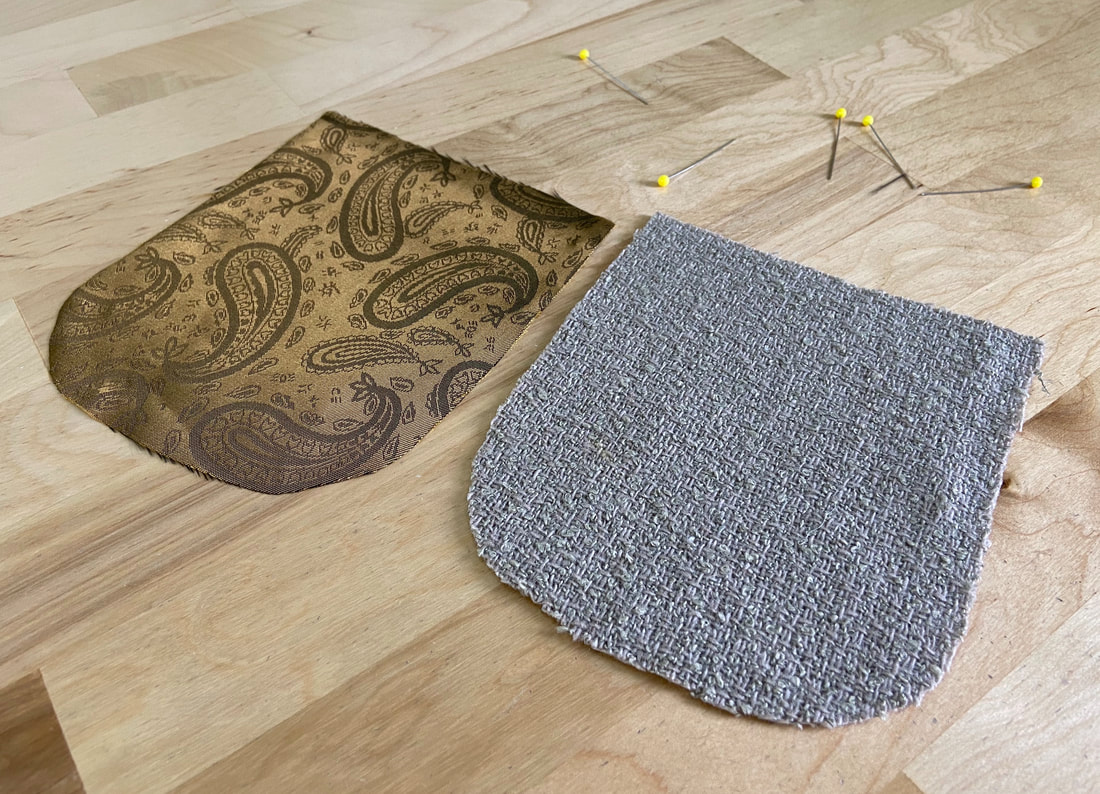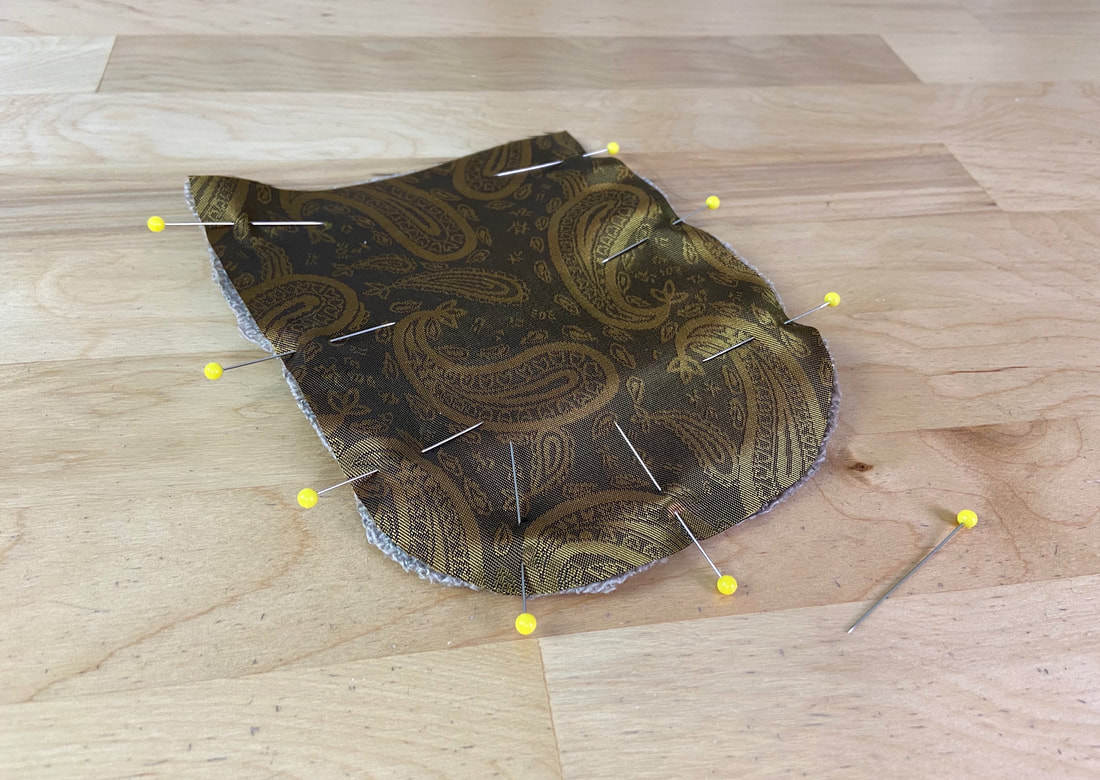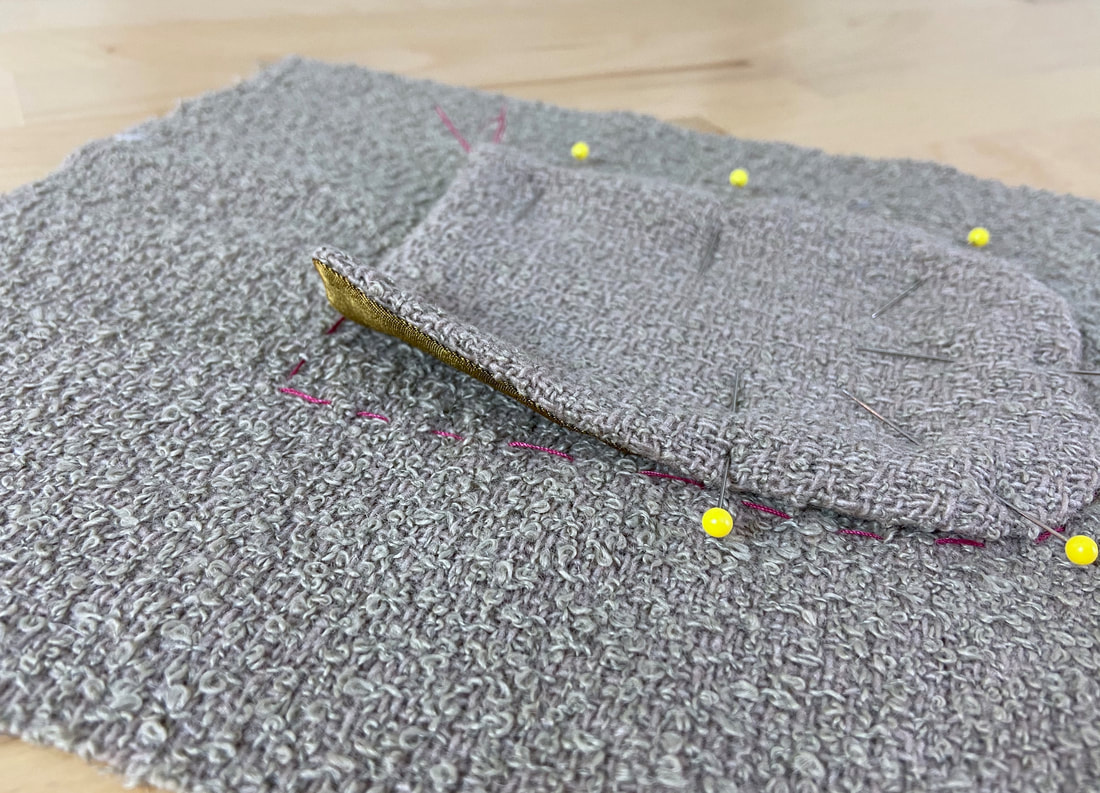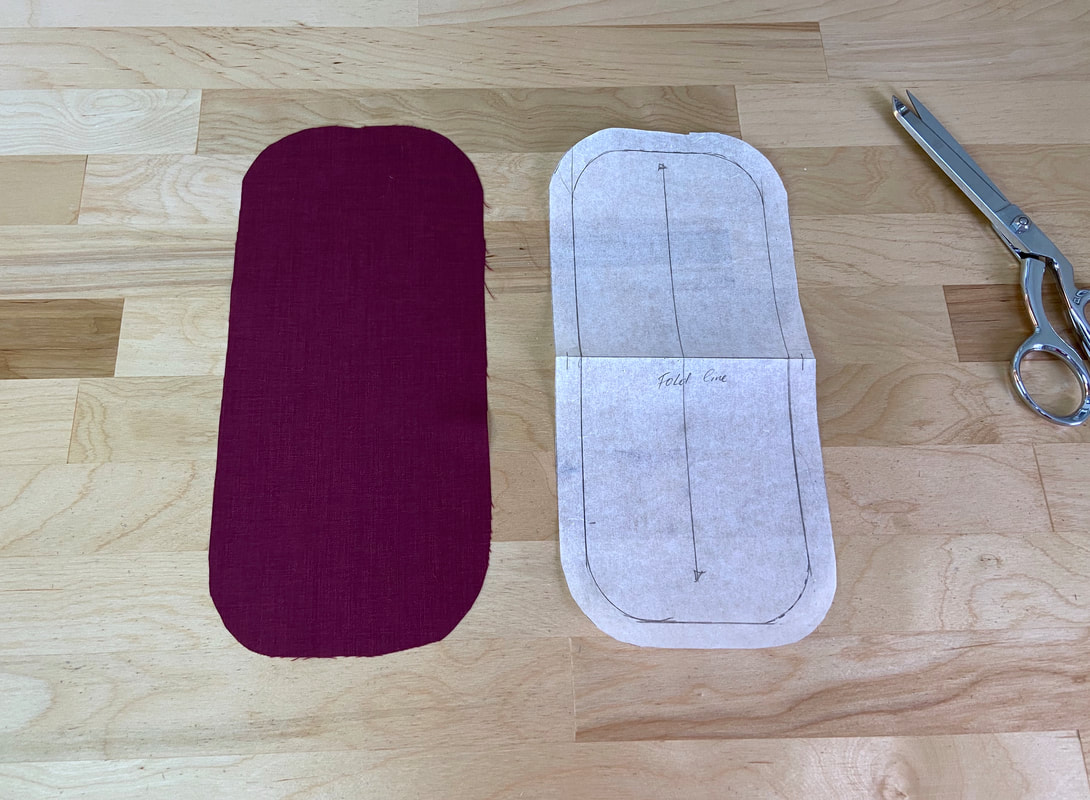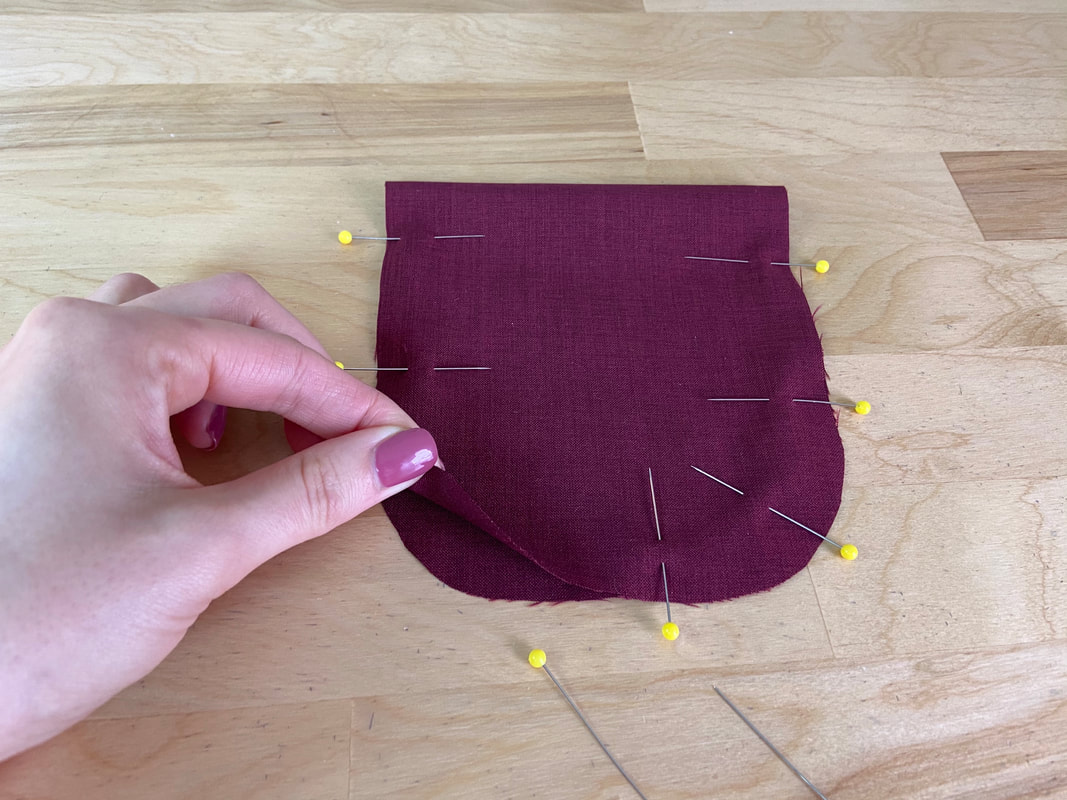Two Ways To Sew Lined Patch Pockets
When sewing fully lined patch pockets there are two different ways to construct the lined pocket bag: A separate lining or a self-lining built into the pocket bag as an extension. The choice should be made based on what is most suitable for the design and the type of fabric used.
The separate lining method: This lined patch pocket is constructed of two separate pieces - one is the lining layer and the other is the self.
The self serves as the patch pocket's face side, visible on the application's right side, while the lining is used to clean-finish the patch pocket and is enclosed on the pocket's underside.
This technique is great for heavyweight fabrics that become too bulky if used with the extension lining technique described below. The separate lining material is always lighter than the pocket self. Its purpose is to finish the pocket's raw edges without adding unnecessary bulk or thickness.
The self serves as the patch pocket's face side, visible on the application's right side, while the lining is used to clean-finish the patch pocket and is enclosed on the pocket's underside.
This technique is great for heavyweight fabrics that become too bulky if used with the extension lining technique described below. The separate lining material is always lighter than the pocket self. Its purpose is to finish the pocket's raw edges without adding unnecessary bulk or thickness.
Conventionally, the lining layer is trimmed by about 1/16" along all edges. This slight difference in size makes a big difference in the way the finished lining layer sits along the patch pocket edges.
With this trimming technique, the lining pulls the pocket layer inward a bit such that when the patch pocket is topstitched, the lining is not visible along the pocket's finished edges.
With this trimming technique, the lining pulls the pocket layer inward a bit such that when the patch pocket is topstitched, the lining is not visible along the pocket's finished edges.
The extension self-lining method: An extension lining is built into the shape and length of the pocket bag. The pocket piece is constructed such that the lining is folded over the pocket's opening edge aligning perfectly to the rest of the pocket bag. The lining portion is the mirror image of the pocket self (on its opposite end).
To complete the lined patch pocket, the two edges (lining and self) are aligned, pined, and stitched along the side and bottom edges. With the construction process almost identical, the only difference between these two lining techniques is that in the extension example, the finished opening is always a folded edge, while with a separate lining, it is always a seam.
Given that the lining layer is the same as the pocket bag, you should choose the patch pocket fabric carefully. Avoid fabrics so thick that when folded, become too bulky and difficult to topstitch.
Given that the lining layer is the same as the pocket bag, you should choose the patch pocket fabric carefully. Avoid fabrics so thick that when folded, become too bulky and difficult to topstitch.

